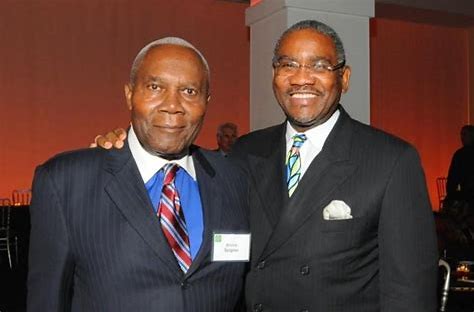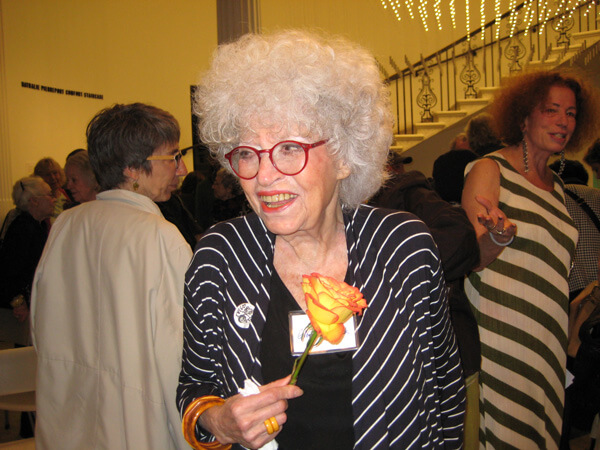Former longtime City Councilman and District Leader Archie Spigner died Thursday, Oct. 29. He was 92 years old.
The Guy R. Brewer United Democratic Club announced the news of Spigner’s death on its Facebook page on Friday. Oct. 30.
“It’s with great sorrow that we announce the passing of our great leader former City Councilman and District Leader “The Dean” Archie Spigner,” the Facebook post reads. “We will keep everyone updated on memorial services.”
As news of his passing became public, tributes dedicated to Spigner were shared on social media.
The Queens County Democratic Party said the borough lost “an absolute giant.”
Queens Congressman Gregory Meeks, said on Twitter that southeast Queens “lost a godfather of politics.”
“New York City lost a great leader last night, and our nation lost a great man,” Meeks wrote. “Archie Spigner will be missed dearly. May god rest his soul.”
Brooklyn Borough President Eric Adams, a close friend of Spigner, said the “Dean of Southeast Queens” will be missed.

“He was the consummate organizer and a distinguished public servant, a man who was instrumental in advancing the welfare of our city’s Black community and uplifting its leaders into roles that made change possible,” Adams said. “Archie was a respected advisor to me for many years, dating back to my years in 100 Blacks in Law Enforcement Who Care. On behalf of Deputy Borough President Chaplain Lewis-Martin and our entire borough, my heart goes out to his wife Leslie and the entire Spigner family.”
Dr. Berenecea Eanes, the president of York College, said on Twitter that she was “saddened” to learn of Spigner’s passing.
“The ‘Dean of Southeast Queens Politics’ had a long history of service & was among several elected officials involved in establishing @YorkCollegeCUNY Rest In Peace to a friend of York & beloved mentor to many,” she wrote.
Spigner was born on Aug. 27, 1928, in Orangeburg, S.C., where Spigner, the last of five kids, was born on Aug. 27, 1928. His family moved in shifts to the northeast in the late 1930s and beyond, some members living with relatives in Stamford, Conn., and others staying behind on a farm. Spigner migrated to Harlem, then to the Bronx, and finally, to southeast Queens.
Along the way, he picked up loose change shining shoes, helping out in local barber shops. He would get married, then go on to work in a shoe factory, a bakery, and as a bus driver, juggling employment with raising a family.
Spigner enrolled in Central Needle Trades High School (a “fashion high school”, he calls it) in Manhattan, graduating in 1947. He joined its co-op program and went to work in a shoe factory, no different than the average sweat shop at the time. At the suggestion of a co-worker, he enrolled in the Jefferson School of Social Science, a prominent left-wing institution where he learned parliamentary procedure — still one of the anchors of politics. He became the factory shop steward and thus began his long association with labor and organizing.
Leaving the garment trade, Spigner became a New York City bus driver and in the mid-1950s, he joined the Negro American Labor Council founded by the late great labor leader, City College alumnus A. Philip Randolph. Spigner organized the Queens Branch of the Negro American Labor Council. He had been traveling to Harlem from Queens for meetings, but there was enough of a critical mass to merit a Jamaica presence.
He held the first meetings in his living room in Queens, “even before I had furniture,” he recalled. He assumed the role of secretary or assistant secretary. “I’m a joiner,” Spigner has said. “That’s what I am, I’m a joiner, and I became a volunteer. Who’ll take the minutes? I’ll take the minutes!”
One night, Spigner met the late Kenneth N. Browne, an assistant district attorney, at Fuzzy’s on Linden Boulevard. Browne was running for the New York state Assembly. After Spigner asked, “You need some help?,” Browne invited him to the local Democratic Club. There, he met legendary district leader Guy R. Brewer, who asked Spigner to help organize some new troops to gather petition signatures to help Browne qualify for the ballot. Browne won the election.
Brewer was working as the liaison to the African-American community for Queens Borough President Sidney Leviss. Subsequently, Browne became a civil court judge and Brewer won the vacated Assembly seat. Brewer was obliged to give up his district leader position because he could not hold it simultaneously with the legislative seat. He asked Archie to become district leader and Spigner moved into Borough Hall to take Brewer’s place there. The musical chairs were humming.
“When I met people like Guy Brewer and Ken Browne, I recognized that I needed some (more) education,” Spigner said.
He enrolled in classes at St. Monica’s Church in Jamaica — where York College stands today — to strengthen his academic skills. He was admitted to an associate degree program at Queens College in the mid-1960s, earned a bachelor’s degree in political science from QC in 1972 and went on to pursue graduate studies at the college.
In 1974, the New York City Council was expanded from 35 to 51 members. Tired of trekking to Albany, Brewer wanted to join the Council and have Spigner replace him in the Assembly. Spigner demurred.
The Democratic Club’s board of directors voted — by secret ballot — to resolve the dispute. Winning by one vote, Spigner went on to become a City Councilman and then deputy majority leader, appointed by Speaker Peter Vallone. During his 27-year tenure, Spigner chaired the Committees of Housing and Buildings, and Economic Development, and the Legislative Office of the Budget Review. A two-term limit was imposed on Council members in a 1993 referendum and, subsequently, Archie left the City Council. But his legacy lived on.
On May 6, 2005, Borough President Helen Marshall proclaimed “Archie Spigner Day” in Queens. At a ceremony that day, federal officials renamed a United States Post Office in St. Albans in his honor. Congressman Gregory Meeks authored the bill. It passed both the House of Representatives and the Senate and was signed by President George W. Bush. At the event in Queens, Senator Charles Schumer thanked Spigner and his club for strongly supporting him when he ran against Alfonse D’Amato for the United States Senate.
“All of us stand on Archie’s shoulders,” Schumer said at the time.
At another occasion, New York state Senator Leroy Comrie spoke about Spigner, his longtime mentor and close friend. He stated, in part, “Archie is a person that has a keen sense of the dynamic of a situation. He does his homework and is never underprepared. He’s willing to listen to reason. He loves to debate. He loves to write and truly loves the city. . . . He has worked hard for equality to ensure that all are given equal treatment. . . . He has never backed away from an issue in which he has believed.”
Outside the Guy R. Brewer United Democratic Club in St. Albans is a sign that Spigner as its district leader. The sign is a reminder that in Spigner’s universe, another election is always around the corner.
This story first appeared on our sister publication qns.com. Editor’s note: Excerpts of this article are sourced from “Building Futures: The honorable Archie Spigner and his place in Queens history,” which was written by Jay Hershenson, Queens College’s Vice President for Communications and Marketing and Senior Advisor to the President, and published on QNS.com in January 2020.




































